

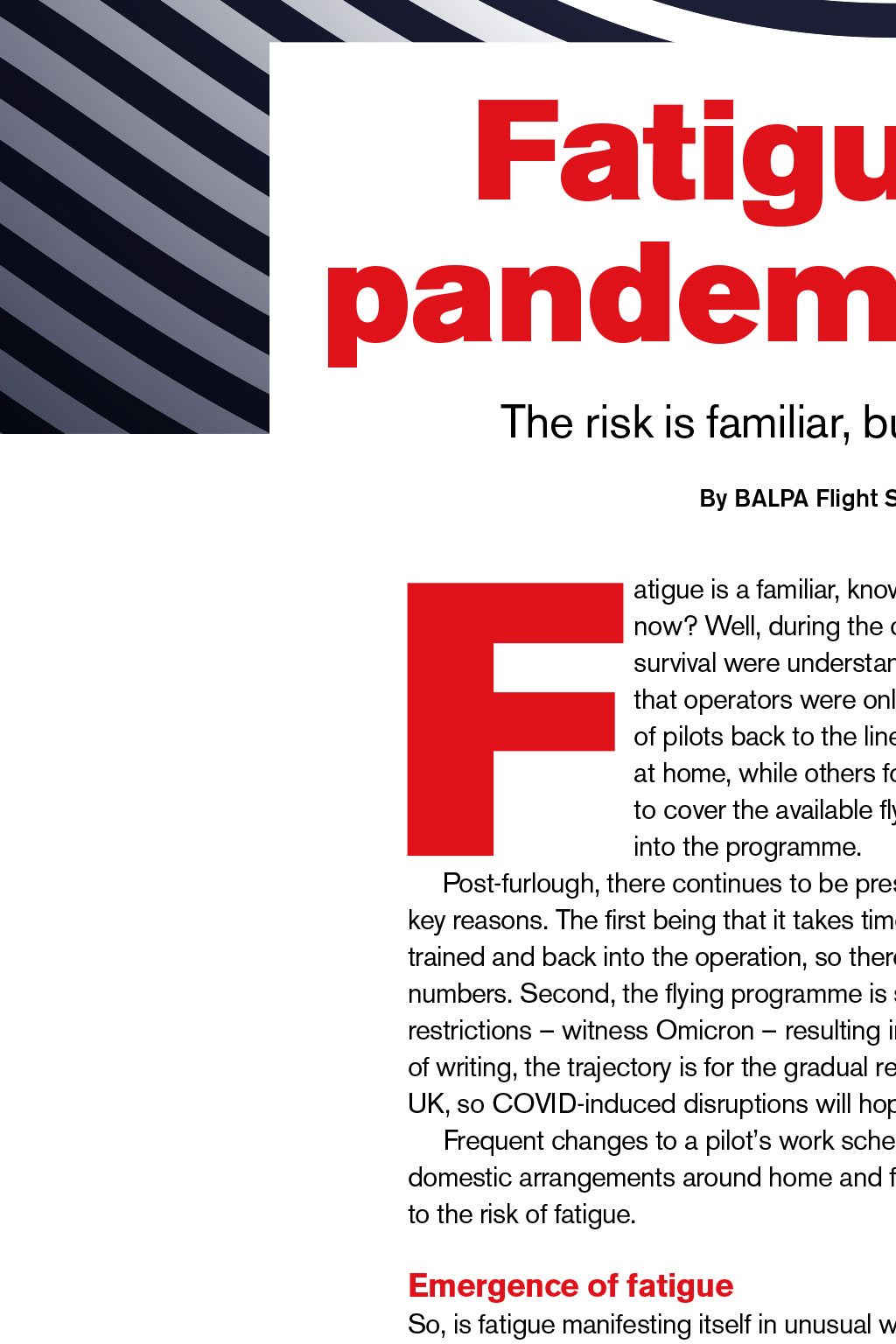
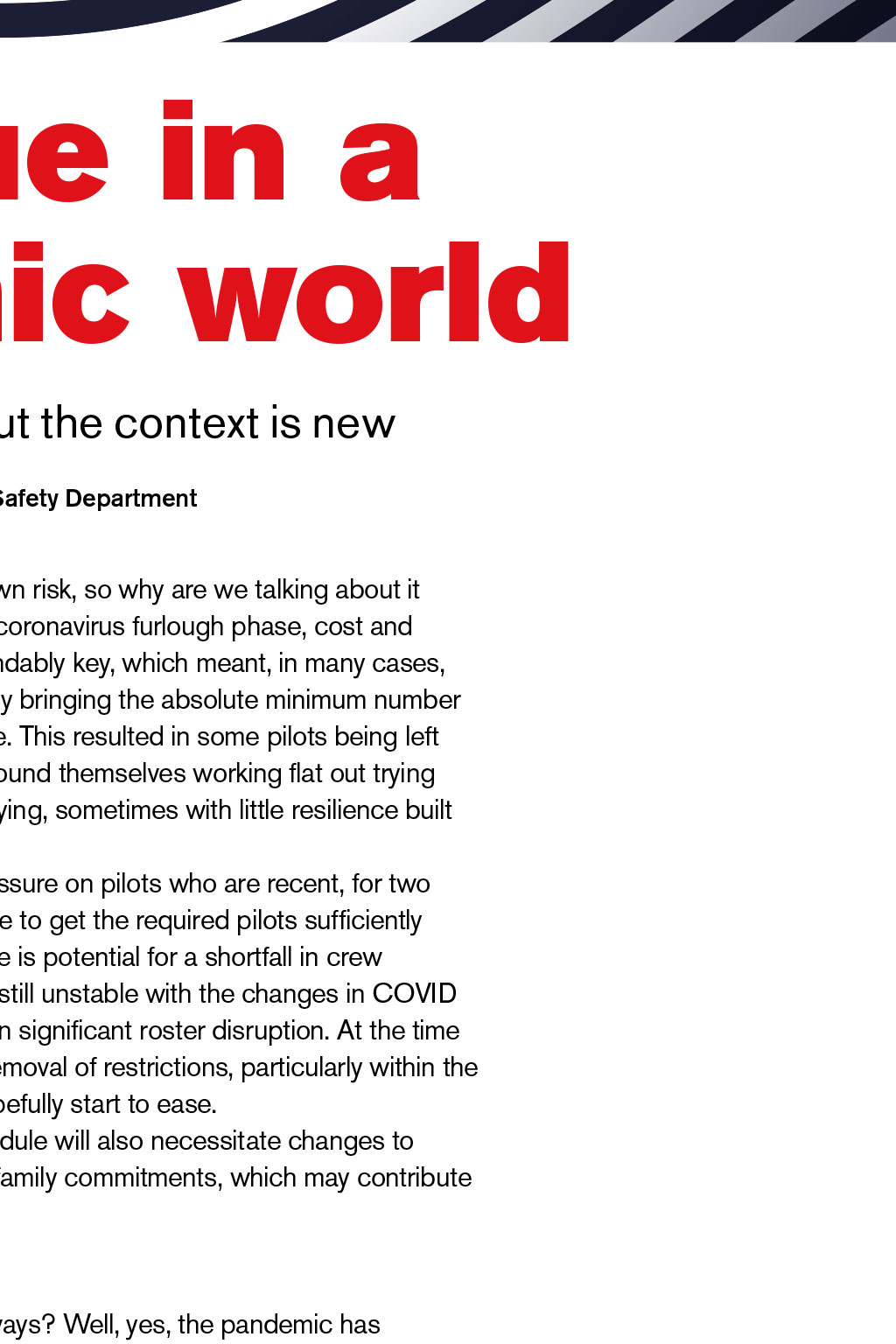
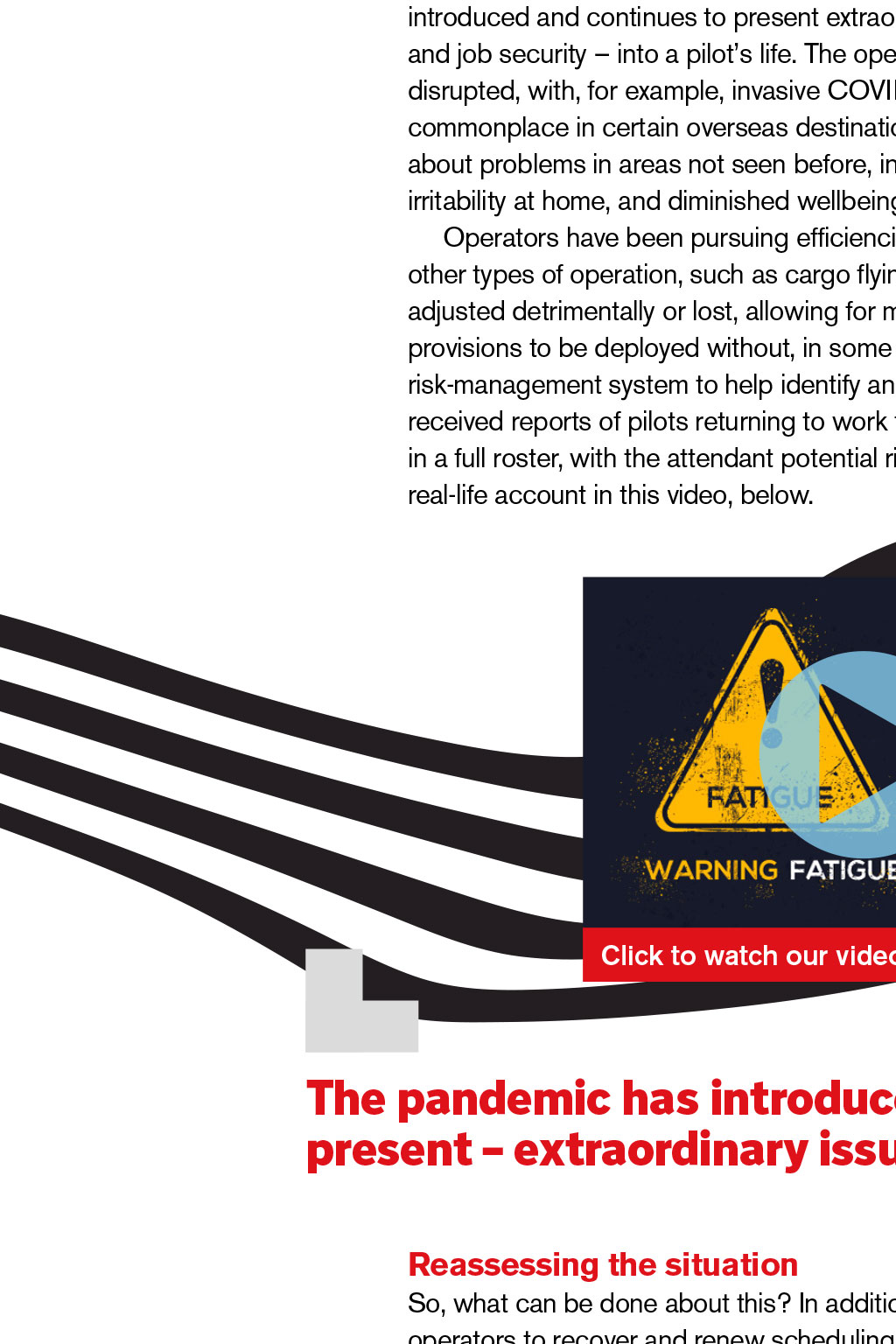
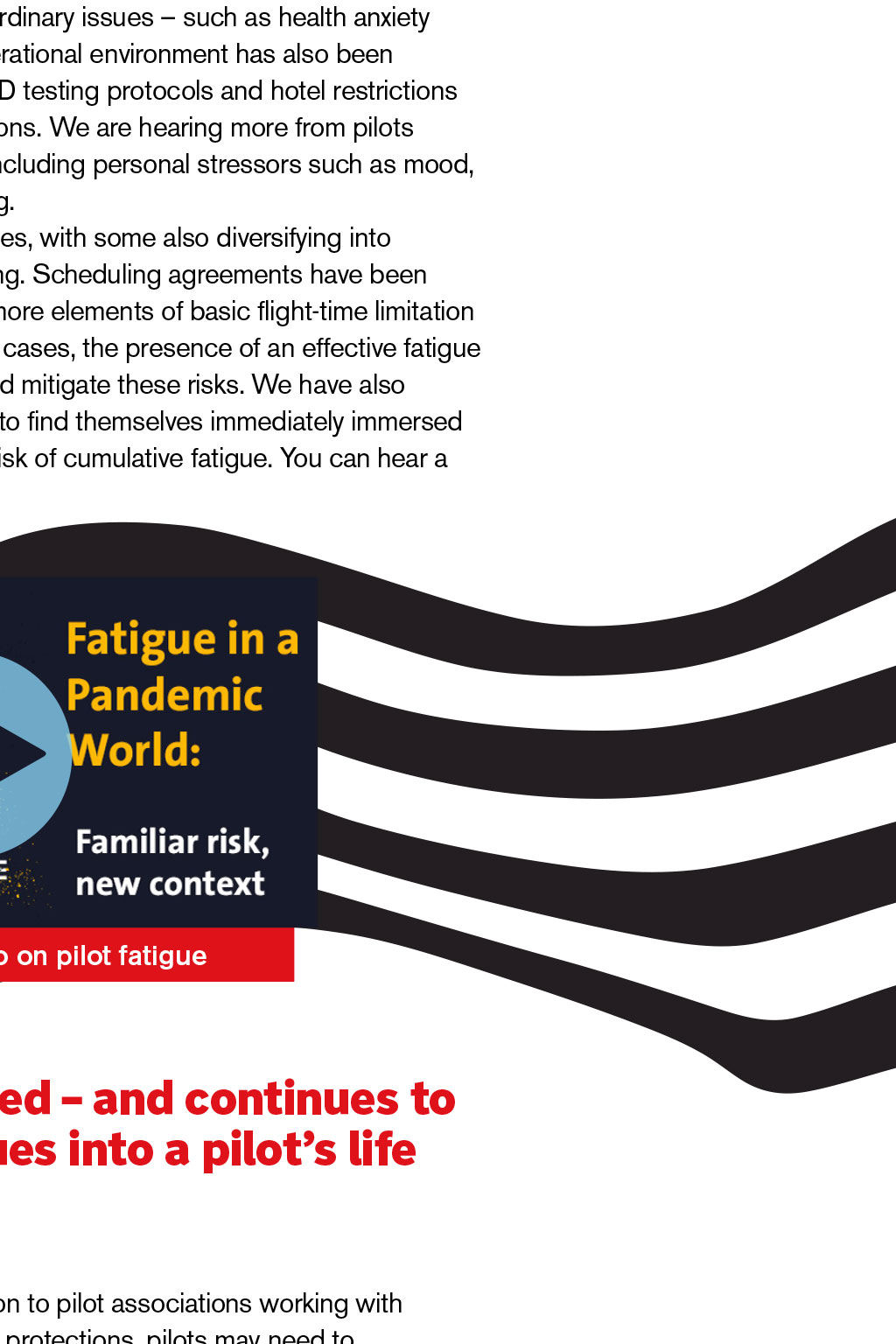
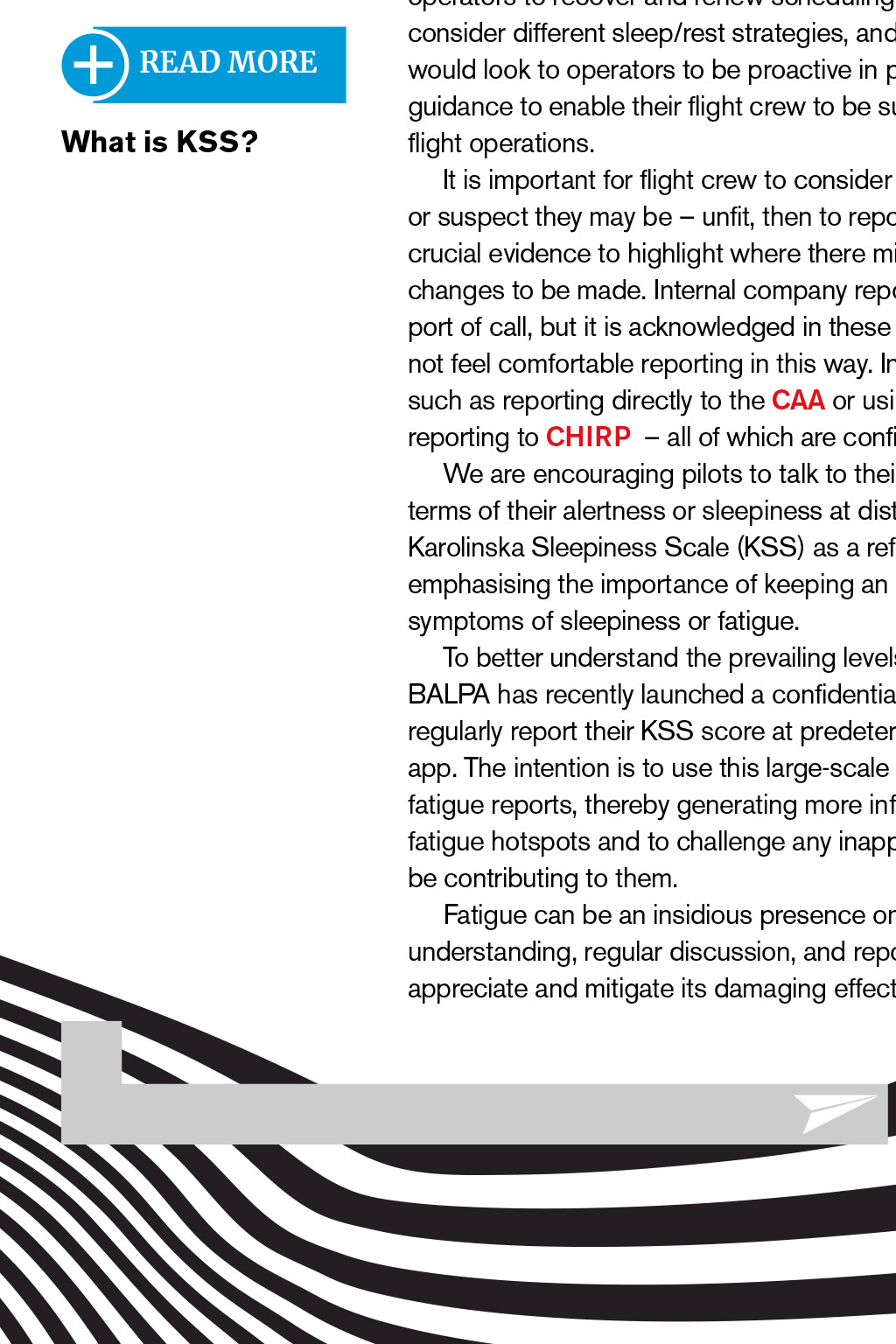
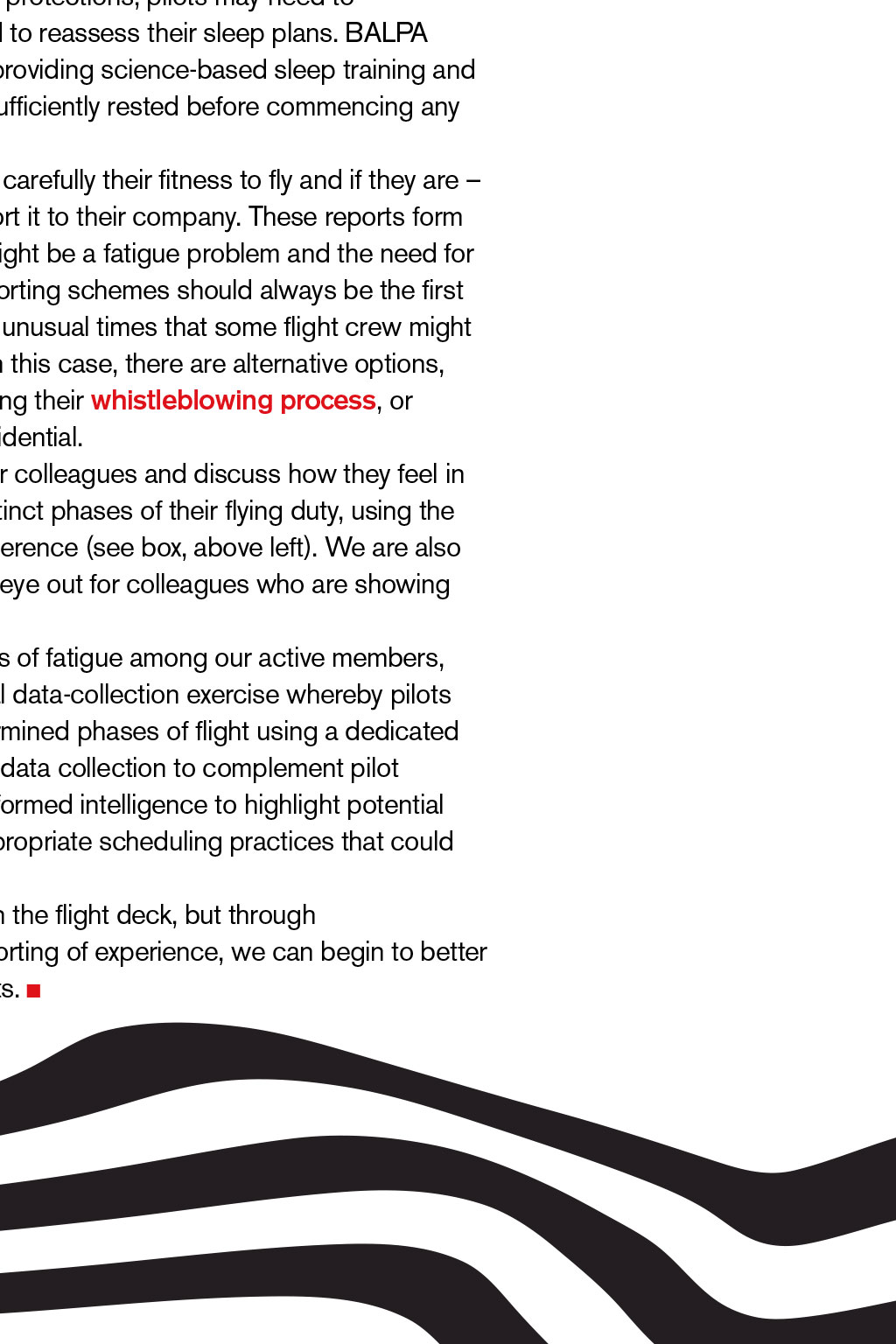













TECH LOG The risk is familiar, but the context is new By BALPA Flight Safety Department atigue is a familiar, known risk, so why are we talking about it now? Well, during the coronavirus furlough phase, cost and survival were understandably key, which meant, in many cases, that operators were only bringing the absolute minimum number of pilots back to the line. This resulted in some pilots being left at home, while others found themselves working flat out trying to cover the available flying, sometimes with little resilience built into the programme. Post-furlough, there continues to be pressure on pilots who are recent, for two key reasons. The first being that it takes time to get the required pilots sufficiently trained and back into the operation, so there is potential for a shortfall in crew numbers. Second, the flying programme is still unstable with the changes in COVID restrictions witness Omicron resulting in significant roster disruption. At the time of writing, the trajectory is for the gradual removal of restrictions, particularly within the UK, so COVID-induced disruptions will hopefully start to ease. Frequent changes to a pilots work schedule will also necessitate changes to domestic arrangements around home and family commitments, which may contribute to the risk of fatigue. Emergence of fatigue So, is fatigue manifesting itself in unusual ways? Well, yes, the pandemic has introduced and continues to present extraordinary issues such as health anxiety and job security into a pilots life. The operational environment has also been disrupted, with, for example, invasive COVID testing protocols and hotel restrictions commonplace in certain overseas destinations. We are hearing more from pilots about problems in areas not seen before, including personal stressors such as mood, irritability at home, and diminished wellbeing. Operators have been pursuing efficiencies, with some also diversifying into other types of operation, such as cargo flying. Scheduling agreements have been adjusted detrimentally or lost, allowing for more elements of basic flight-time limitation provisions to be deployed without, in some cases, the presence of an effective fatigue risk-management system to help identify and mitigate these risks. We have also received reports of pilots returning to work to find themselves immediately immersed in a full roster, with the attendant potential risk of cumulative fatigue. You can hear a real-life account in this video, below. Click to watch our video on pilot fatigue The pandemic has introduced and continues to present extraordinary issues into a pilots life Reassessing the situation READ MORE What is KSS? So, what can be done about this? In addition to pilot associations working with operators to recover and renew scheduling protections, pilots may need to consider different sleep/rest strategies, and to reassess their sleep plans. BALPA would look to operators to be proactive in providing science-based sleep training and guidance to enable their flight crew to be sufficiently rested before commencing any flight operations. It is important for flight crew to consider carefully their fitness to fly and if they are or suspect they may be unfit, then to report it to their company. These reports form crucial evidence to highlight where there might be a fatigue problem and the need for changes to be made. Internal company reporting schemes should always be the first port of call, but it is acknowledged in these unusual times that some flight crew might not feel comfortable reporting in this way. In this case, there are alternative options, such as reporting directly to the CAA or using their whistleblowing process, or reporting to CHIRP all of which are confidential. We are encouraging pilots to talk to their colleagues and discuss how they feel in terms of their alertness or sleepiness at distinct phases of their flying duty, using the Karolinska Sleepiness Scale (KSS) as a reference (see box, above left). We are also emphasising the importance of keeping an eye out for colleagues who are showing symptoms of sleepiness or fatigue. To better understand the prevailing levels of fatigue among our active members, BALPA has recently launched a confidential data-collection exercise whereby pilots regularly report their KSS score at predetermined phases of flight using a dedicated app. The intention is to use this large-scale data collection to complement pilot fatigue reports, thereby generating more informed intelligence to highlight potential fatigue hotspots and to challenge any inappropriate scheduling practices that could be contributing to them. Fatigue can be an insidious presence on the flight deck, but through understanding, regular discussion, and reporting of experience, we can begin to better appreciate and mitigate its damaging effects. READ MORE WHAT IS KSS? The Karolinska Sleepiness Scale (KSS) is a nine-point subjective scale, frequently used within research for evaluating sleepiness. Rating on this scale provides the individual with a measure of their sleepiness that reflects the psycho-physical state experienced in the past 10 minutes. The KSS is sensitive to sleepiness fluctuations: several studies have shown that KSS scores rise with increased periods of sustained wakefulness, and strongly correlate with time of day. The attractiveness of its use is that, in comparison with most other subjective scales, it has been scientifically validated with objective physiological measures of sleepiness, showing high correlations with EEG (electroencephalography) and behavioural variables. KSS ratings hence serve as a useful proxy for EEG or behavioural indicators of sleepiness. This self-rating scale represents a scientifically validated way for pilots to assess and report on their sleepiness level.